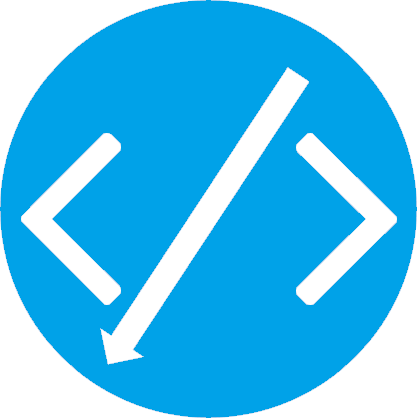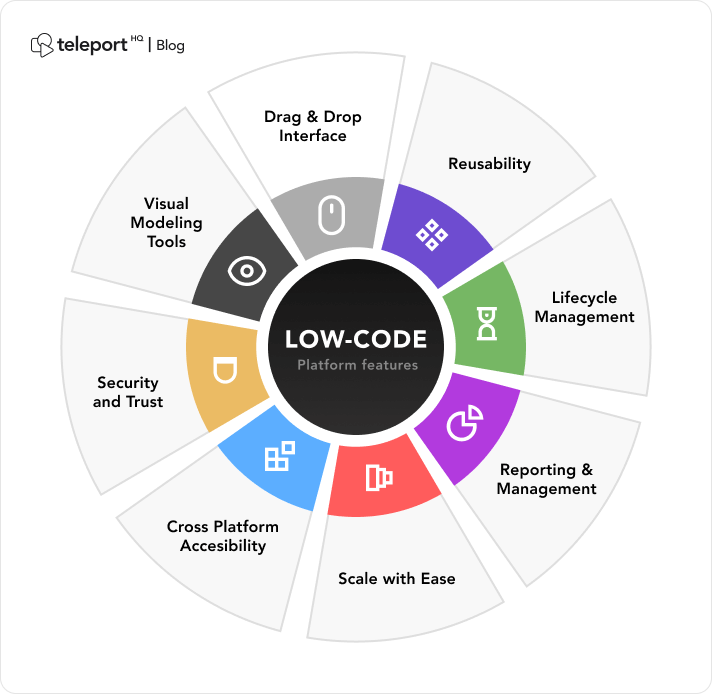Great Ideas On Deciding On Legacy application modernization with Low-code
Wiki Article
In Regards To Integration Capabilities Low-Code Application Development Has A Lot Of Advantages.
Integration of low-code applications offers a variety of advantages, such as the ability to seamlessly integrate different systems and services. Here are some of the benefits that come with connectors that are pre-built, APIs, and other tools:
Wide Selection of Connectors. Low-code systems typically include an array of built-in connections to enterprise systems that are popular (e.g. cloud services, databases, CRM). The process of integrating the systems can be made much easier.
API Integration - Many low-code platforms have built-in API integration, allowing developers to easily access external data sources or services.
Ease Of Use
Drag-and Drop Integration: Many integration tasks are performed with drag-and-drop interfaces. This allows developers and non-developers to build complex integrations with little or no code.
Visual Workflow Builders : Software for creating workflows and data flow which visually represent help learn and configure integrations in a more intuitive way.
Standardized Integration Methods:
SOAP and Restful Service: Using standard web service protocols such as SOAP or REST makes it easy to integrate other systems and applications.
OData Standards and other Standards The support for standards, such as OData permits the easy access of data as well as its manipulation across different platforms and apps.
Real-Time Data Synchronization:
Real-Time Integrations: Low code platforms can handle the real-time synchronization between data applications, systems as well as databases. This ensures that all data is current and consistent throughout an company.
Event-Driven Architectural: Some platforms have event-driven architectural designs which allow applications to react in real-time to events which is essential for dynamic, interactive applications.
Legacy System Integration:
Connecting old and new Systems Low-code platforms usually provide tools to integrate with legacy systems, allowing companies to modernize their IT infrastructure without completely overhauling the existing system.
Data Migration Tools: Built-in software helps transfer data from outdated applications to new ones that are built on platforms that have low-code.
Integration of Third-Party Services:
Cloud Services Integration: Easy scaling and deployment of applications can be achieved through seamless integration of cloud services like AWS, Azure and Google Cloud.
Integration of Business Applications Lowcode platforms can be utilized to connect various business applications like Salesforce, SAP, Microsoft Dynamics etc. to create a seamless workflow among different business functions.
Simple Data Management:
Unified Data Models: Some low-code platforms provide unified data modeling that simplifies data integration and management across different systems.
Data Connectors: These pre-configured data connectors allow easy access to and manipulation of data from different sources.
Security and Compliance:
Secure Integrations - Low-code platforms have been designed to ensure that all integrations conform to security protocols and standards. This protects the data in transit as well as when it is being stored.
Compliance Features - These platforms have features to ensure the integrations are compliant with regulatory regulations.
Extensibility:
Low-code platforms often meet complex integration needs by including custom code or scripts. They offer flexibility without compromising their accessibility.
Plug-in Ecosystem An ecosystem of plugins and extensions allows integration to be enhanced by allowing users to implement new functions as they are needed.
Overall, integration capabilities within low-code application development platforms permit them to function as a strong platform for developing interconnected and scalable, efficient and connected applications. They make it easier to connect various systems. They also improve the flow of data. Take a look at the recommended Low-code Platform for application development for more advice including developing mobile apps, database in azure, cross platform mobile dev, low code development platforms, microsoft azure sql, application modernization, push alerts, jdbc server, jdbc server, cross platform app dev and more.

Benefits Of Application Development With Low-Code In Governance And Security
Low-code application development offers several advantages when it comes to governance and security, which is essential to ensure that applications are safe and secure. They also ensure that they are well-managed throughout their lifespan. Here are the most significant advantages: Centralized Governance
Unified Management Console: A low-code platform typically provides a central dashboard where administrators can control and monitor all applications to ensure consistency in governance throughout the entire organization.
Role-Based Access Control: These platforms include robust role-based control which allows administrators to set rules and then enforce these policies. Only authorized users are able to access and modify specific areas of an application.
Compliance and Regulatory Conformity:
Many low-code platforms come with integrated compliance features. They are built in line with the standards of the industry as well as regulations and laws (e.g. HIPAA, GDPR). They provide tools and templates to ensure that applications comply with these regulations.
Audit Trails: Organizations often incorporate comprehensive audit and logging trail systems, which enable them to keep track of changes, track access and ensure that they are in compliance with internal as well as external regulations.
Improved Security Measures:
Data Encryption: Low-code systems commonly offer built-in encryption for data in transit and during transit, which ensures that sensitive information is protected.
Security Certificates: A lot of low-code companies have a security certificates (e.g. ISO 27001 and SOC 2) which demonstrate their adherence to strict security standards. They provide an additional level of assurance to customers.
Automated Security Updates:
Regular Patching and Updating: Lowcode platforms usually handle regular security updates. These patches safeguard applications against the latest threat without requiring the involvement of developers.
Security Monitoring Tools: These instruments provide alerts in real-time and insights into security concerns that might be present.
Data Governance
Data Access Policies: These platforms allow companies to establish and enforce policies regarding data access which ensure that data is accessible to authorized users and is properly used.
Data Masking and Anonymization Tools built in for data masking & anonymization protect sensitive information especially in testing environments and development environments.
Consistent Lifecycle Management of Applications:
Pipelines for development and deployment Low code platforms have integrated pipelines for development and deployment which include security inspections. They ensure security is maintained through the entire application lifecycle.
Version Control: Integrated version control facilitates the management of modifications. It also guarantees that any changes made to the software are tracked, and if needed, reversed. This ensures the integrity of the software.
Authorization, User Authentication and Authorization
Single Sign-On (SSO). Support for advanced authentication and single sign-on simplifies and enhances security.
Multi-Factor Authentication - Many platforms support multi-factor Authentication that adds an extra layer of security when accessing applications.
Monitoring of Policy Enforcement:
Low-code platforms usually come with pre-defined policies templates that allow organizations to establish security and governance policies swiftly.
Compliance Monitoring Tools: These tools provide continuous monitoring and reporting on compliance status, making it easier to spot and fix potential issues proactively.
Integration into Existing Security Infrastructure:
Easy integration: Low-code systems are able to be seamlessly integrated with existing security tools and systems like firewalls, SIEM solutions (Security Information and Event Management), and identity management systems.
API Security: API features which protect data and maintain the integrity of the application are integrated into the API.
Best Practices and Training
A lot of platforms provide guidelines and best practice for developing secure applications. They can help developers who are not developers to meet security standards.
Certain low-code companies offer security training that helps users build and maintain secure apps.
Overall, the governance and security advantages of developing applications using low-code make sure that applications are created and operated in a secure, compliant, and controlled method. These platforms include the tools and frameworks required to oversee and manage application development processes, safeguarding sensitive information while ensuring regulatory compliance and enforcing policies. Take a look at the top rated visit website about Legacy application modernization with Low-code for more recommendations including cloud software applications, application modernization software, software for app development, application modernisation, application modernization, cross platform mobile development, application modernisation, push notifications, cross platform app development, jdbc server and more.

Benefits Of Low-Code Application Development In Terms Of The Limitations And Customization
Low-code application development is a well-balanced solution that has significant advantages in dealing with limitations and allowing customization. Here are some benefits:
Overcoming Complexity Barriers
Low-code platforms make development easier by providing pre-built templates and other components. This allows for quicker deployment and development of complicated applications.
Guided Workflows - Many platforms provide guided workflows or wizards to aid developers in navigating complex processes. This minimizes the chance of error and ensures the sameness of the process.
Scalability Solutions
Scalability built-in: Low-code platforms usually come with features that allow for scalable architecture. This enables applications to handle higher loads without requiring massive re-development.
Performance Monitoring: Integrated performance monitoring tools and optimization make sure that applications are as efficient as possible, regardless of their size.
Security and compliance:
Integrated Security Features: Low-code platforms have security features built-in such as encryption, access control based on role and automated compliance checks to address security issues that are common.
Regular Updates: Platforms regularly upgrade their security protocols and security measures to ensure that applications are protected against the latest threats.
Customization:
Extensibility:
Low-code platforms allow developers to expand functionality beyond what is available by integrating customized code.
Developers are able to add extensions or modules to meet specific business needs.
APIs and Integration
API Support: Comprehensive APIs support is available to facilitate seamless integration and connection to external systems.
Third-Party Service: Low-code platforms come with pre-built connectors for popular third-party service providers, making it simple to connect and modify applications.
Flexible UX/UI Designs:
Customizable Interfaces Developers are able to create and alter user interfaces in line with specific usability and branding criteria and create a personalized user experience.
Responsive design: The capacity to customize applications for different screen sizes and devices is built-in.
Business Logic Customization
Visual Workflow Designers: These graphic tools are used to customize and design workflows as well as business logic, which allows developers to design complex processes that are tailored for their needs.
Conditional Logic and Scripting: Platforms enable the integration of conditional logic as well as customized scripting to deal with specific business rules and scenarios.
Data Management
Custom Data Models: Developers are able to define custom data models to suit specific application needs and ensure that data handling is customized to the business needs.
Advanced Data Processor: The combination of sophisticated data processing tools and capabilities permits the customisation of the method by which data is processed and analysed within the application.
Balance Customization and Limitations:
Frameworks and Standards
Best Practices in Compliance: Low-code platforms encourage the use of industry-leading practices and standards, which assists in maintaining high-quality robust, and secure applications.
Governance Frameworks: Integrated governance frameworks ensure that the customizations do not affect the integrity, conformity or the security of an application.
Iterative Development and Feedback
Rapid Prototyping: The ability to rapidly prototype and test modifications allows developers to refine their applications based on feedback from users improving the app to better satisfy the user's needs.
Continuous Improvement: Low-code platforms support continuous improvement, allowing for continuous customization and improvement as business requirements evolve.
User Empowerment
Giving Citizen developers the tools they need: The low-code platform's intuitive interfaces let non-developers modify the application. This increases the number of people who can contribute to modify and improve applications.
Support and training: A lot of platforms provide extensive training resources and support services that assist users in creating customizations that are effective without affecting the performance or stability.
In general, low-code application development provides a robust framework that can address the weaknesses and provides a wide range of options for customization. This balance allows businesses to create and maintain functional apps that are tailored to their specific needs, while ensuring high standards of quality, security, and scaling.
